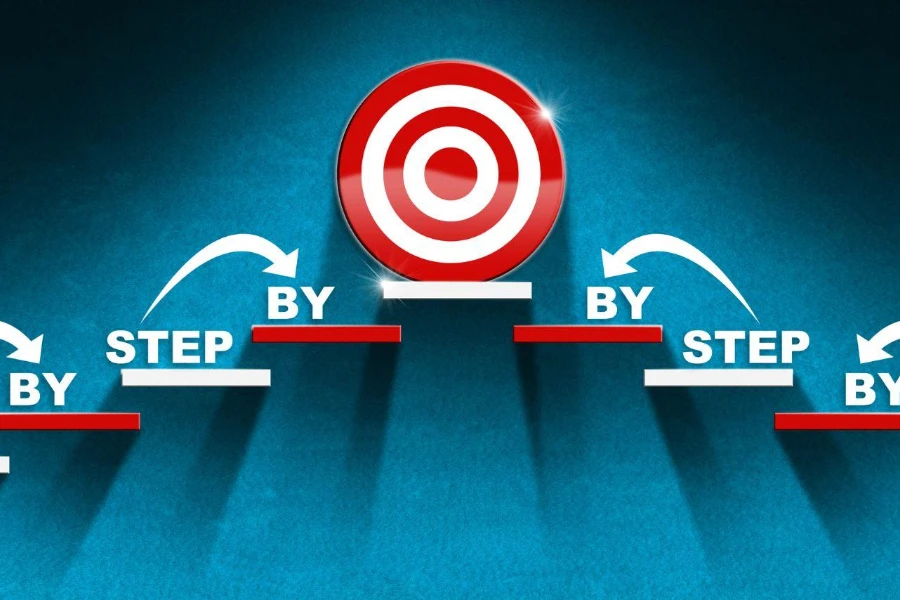In the ever-evolving landscape of digital marketing, lead generation stands as a cornerstone, pivotal for the growth and sustainability of businesses in the B2B sector. This guide aims to demystify the concept of lead generation, breaking down its components into digestible, actionable insights. Whether you’re new to the concept or looking to refine your strategy, this article is designed to equip you with the knowledge and tools necessary to generate high-quality leads that could significantly impact your business’s bottom line.
Table of Contents:
– Understanding lead generation and its importance
– The anatomy of a successful lead generation strategy
– Digital channels for effective lead generation
– Measuring the success of your lead generation efforts
– Future trends in lead generation
Understanding lead generation and its importance

Lead generation is the process of attracting and converting strangers and prospects into someone who has indicated interest in your company’s product or service. It’s a fundamental step in the sales process, providing the fuel for the marketing and sales engine. In the B2B context, where sales cycles can be lengthy and decision-making processes complex, the importance of generating high-quality leads cannot be overstated. It’s not just about quantity; the focus is increasingly on capturing leads that are genuinely interested and ready to engage further with your brand.
The landscape of lead generation has evolved significantly with the advent of digital marketing. Traditional methods like cold calling and direct mail have given way to more sophisticated, targeted strategies that leverage digital channels to reach potential customers. This shift has not only increased the efficiency of lead generation efforts but also opened up new avenues for personalization and engagement, enhancing the quality of leads generated.
At its core, lead generation is about building relationships. By providing value upfront, businesses can establish trust and credibility with potential customers. This approach is particularly effective in the B2B sector, where purchases are often high-value and require a significant level of trust between the buyer and seller.
The anatomy of a successful lead generation strategy

A successful lead generation strategy is multifaceted, combining various elements that work together to attract, engage, and convert potential leads. The first step is understanding your target audience deeply. This involves not just demographic information but also insights into their behaviors, challenges, and motivations. Armed with this knowledge, businesses can create targeted content and messaging that resonates with their audience.
Content marketing plays a pivotal role in lead generation. By creating valuable, relevant content, businesses can attract potential leads to their website or digital platforms. This content can take various forms, including blog posts, whitepapers, infographics, and videos. The key is to provide information that addresses the needs and interests of your target audience, establishing your brand as a thought leader in your industry.
Another critical component of a successful lead generation strategy is a strong digital presence. This includes an optimized website that is not only visually appealing but also structured in a way that guides visitors towards taking action, such as filling out a contact form or downloading a resource. Social media platforms also offer valuable opportunities for engaging with potential leads, allowing businesses to build a community around their brand.
Digital channels for effective lead generation

In today’s digital age, leveraging online channels for lead generation is essential. Search engine optimization (SEO) is one of the most effective ways to increase visibility and attract leads organically. By optimizing your website and content for relevant keywords, you can improve your ranking in search engine results pages (SERPs), making it easier for potential leads to find you.
Email marketing remains a powerful tool for lead generation, allowing businesses to reach out directly to potential customers. The key to success with email marketing is personalization. Segmenting your email list based on user behavior and preferences can significantly increase engagement rates, turning subscribers into leads.
Social media platforms are also powerful channels for lead generation. Platforms like LinkedIn, in particular, are invaluable for B2B marketers, offering targeted advertising options and the ability to connect directly with potential leads. Engaging with your audience through regular posts, comments, and messages can help build relationships and generate leads over time.
Measuring the success of your lead generation efforts

To optimize your lead generation strategy, it’s crucial to measure its success and make data-driven decisions. Key performance indicators (KPIs) such as conversion rates, cost per lead, and return on investment (ROI) can provide valuable insights into the effectiveness of your efforts. Analyzing this data allows you to identify what’s working and what’s not, enabling you to refine your strategy for better results.
Using analytics tools, businesses can track the behavior of visitors to their website, gaining insights into how they interact with content and which channels are driving the most leads. This information is invaluable for optimizing your lead generation strategy and ensuring that your efforts are focused on the most effective tactics and channels.
Future trends in lead generation

As technology continues to evolve, so too do the strategies and tools available for lead generation. Artificial intelligence (AI) and machine learning are increasingly being leveraged to personalize marketing efforts and predict user behavior, offering new opportunities for targeting and engagement. Interactive content, such as quizzes and polls, is also gaining traction as a way to engage potential leads and gather valuable data.
Another emerging trend is the focus on customer experience. In a crowded market, providing a seamless, positive experience can set your brand apart and turn leads into loyal customers. This includes everything from the user experience on your website to the way you communicate with potential leads.
Conclusion:
Lead generation is a critical component of the B2B marketing landscape, essential for building relationships and driving growth. By understanding your audience, leveraging digital channels, and measuring your efforts, you can develop a successful lead generation strategy that delivers high-quality leads. As technology and consumer behavior continue to evolve, staying ahead of the latest trends and adapting your approach will be key to success in the dynamic world of lead generation.




